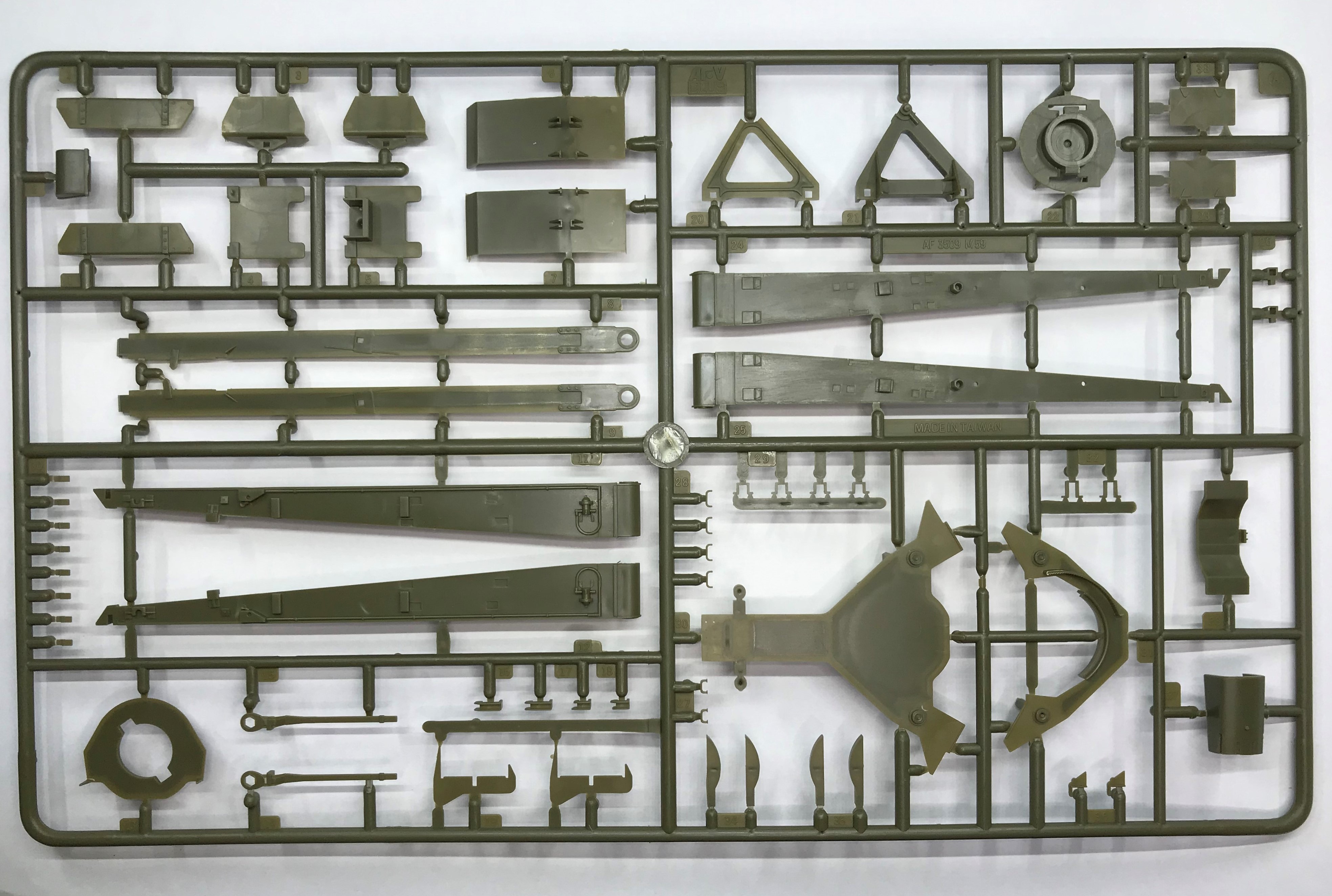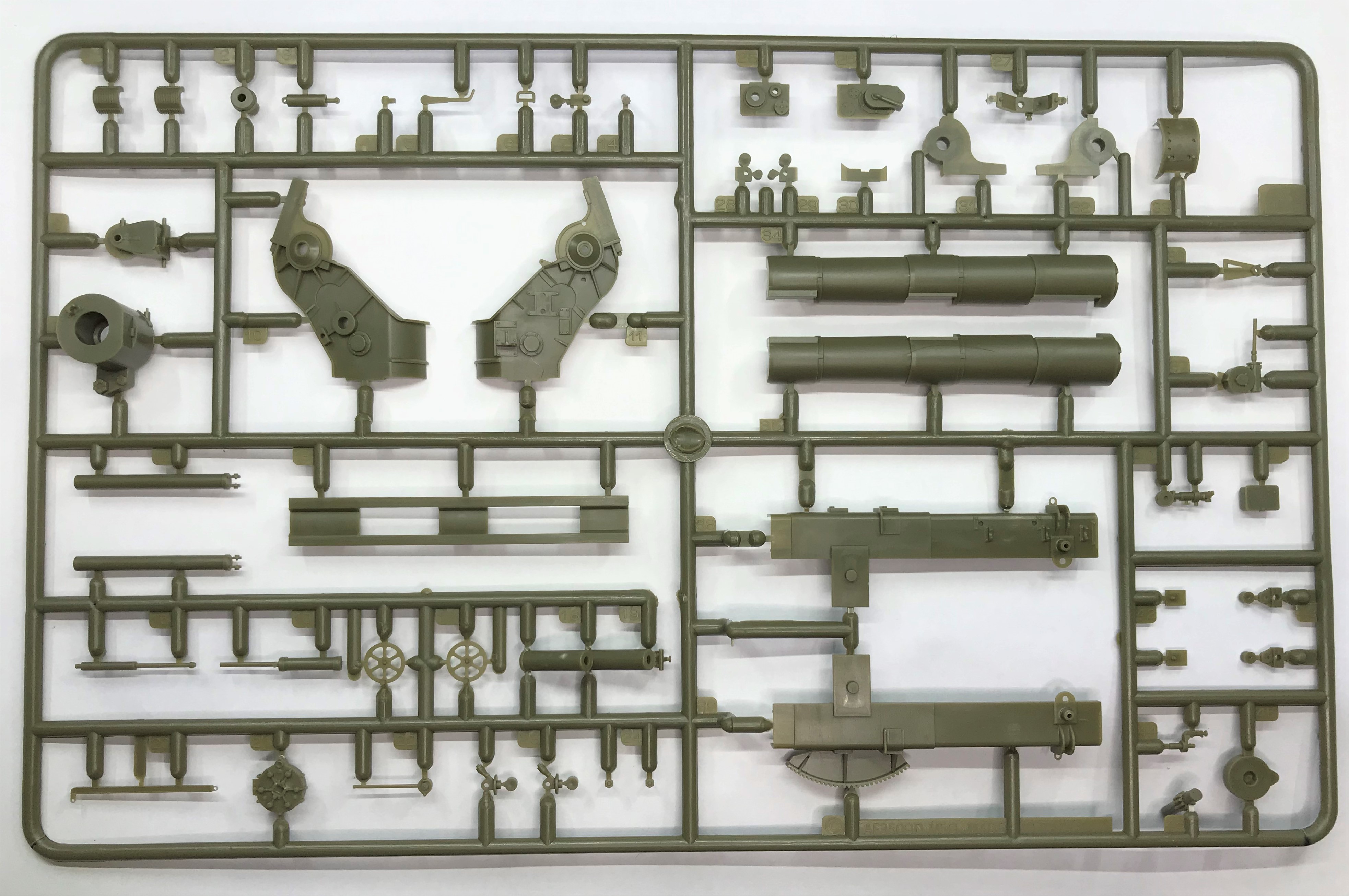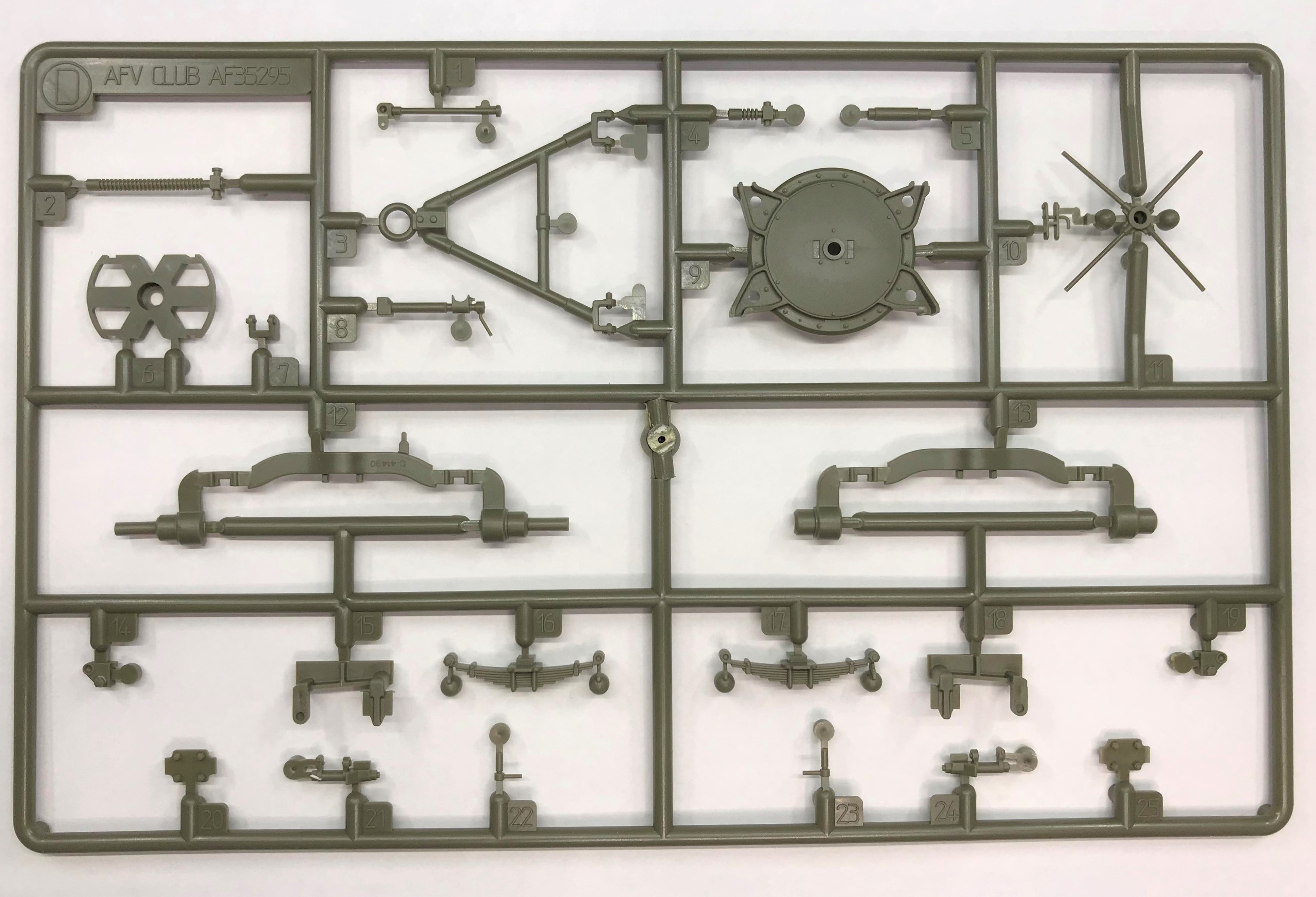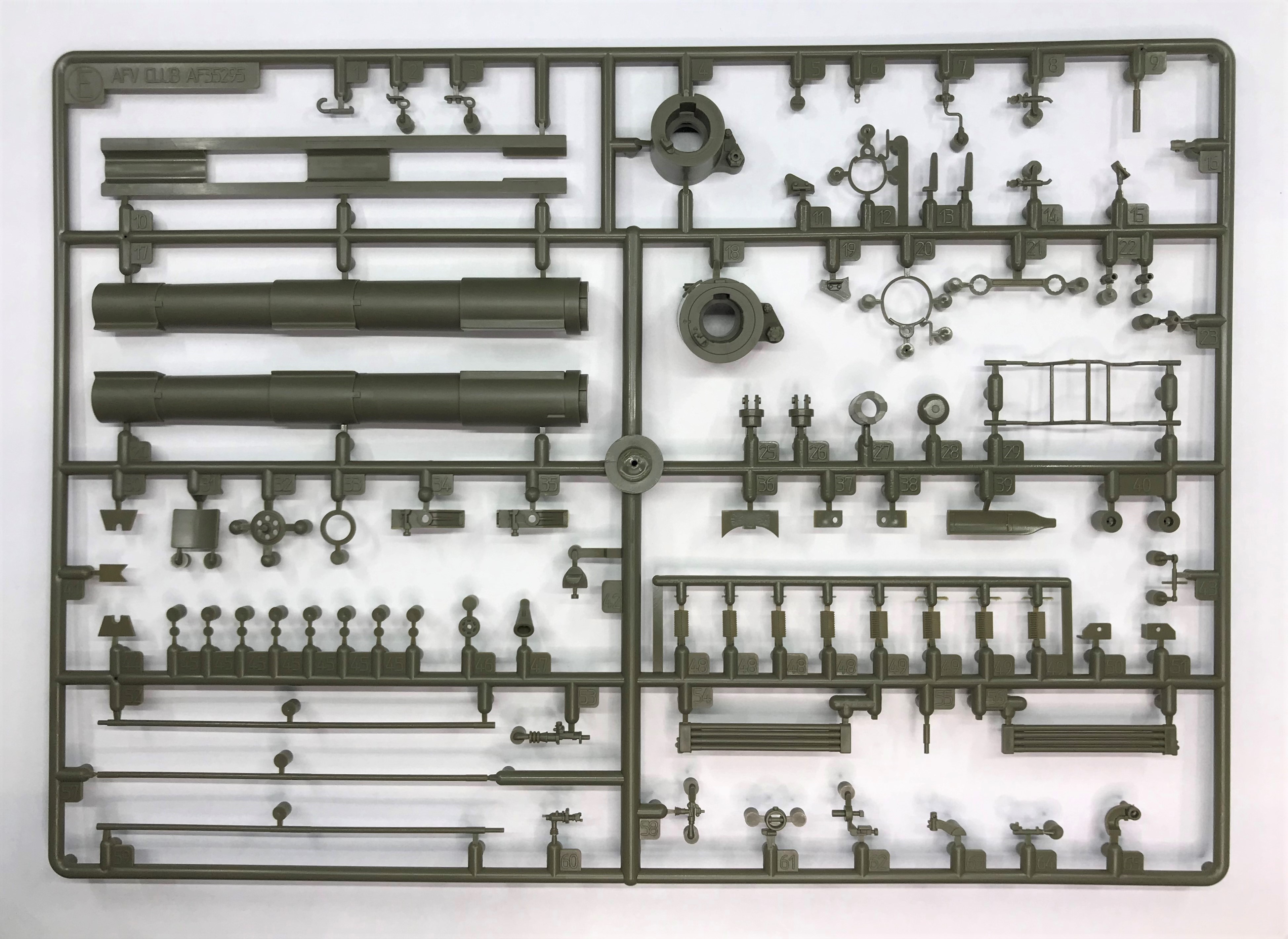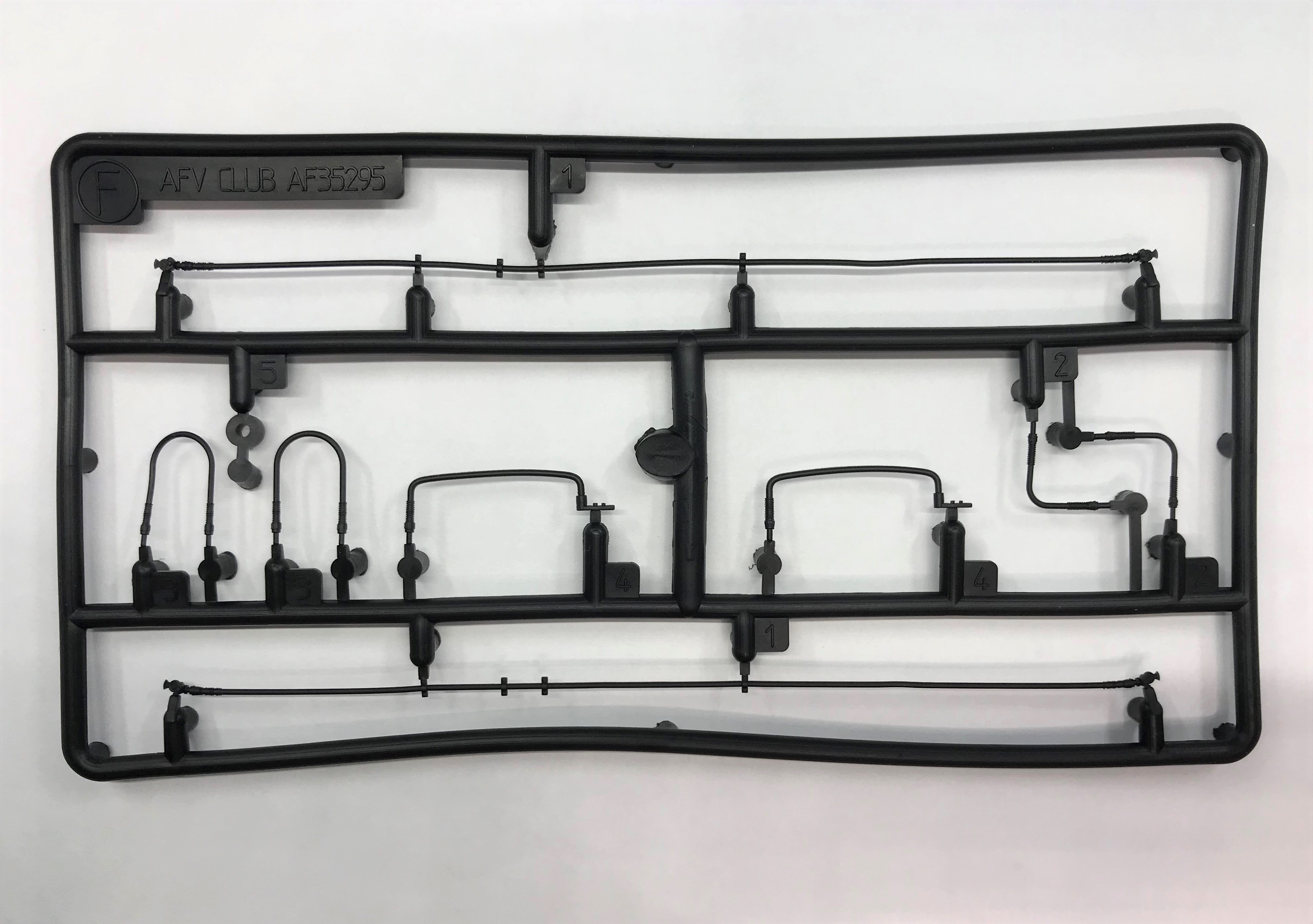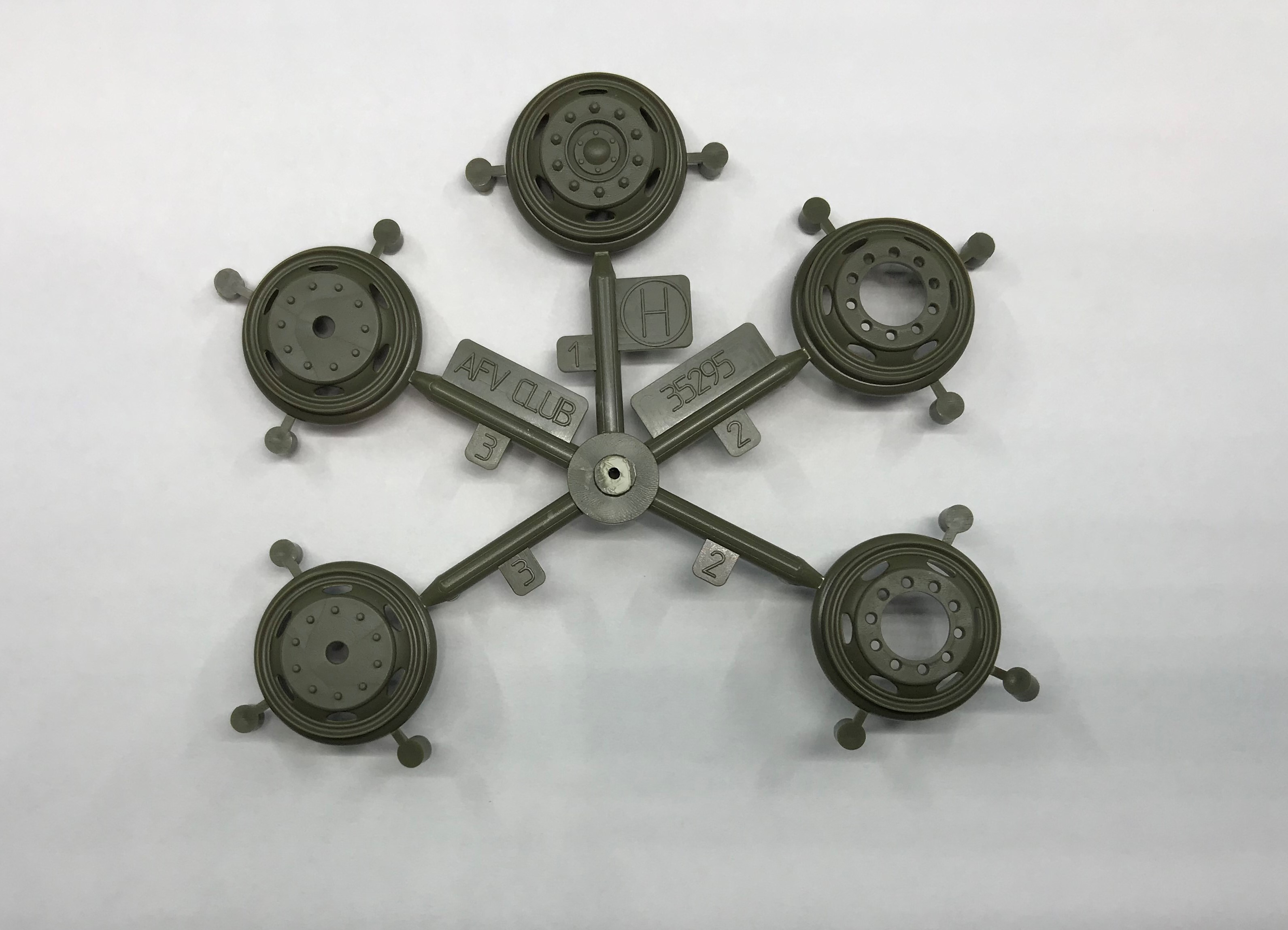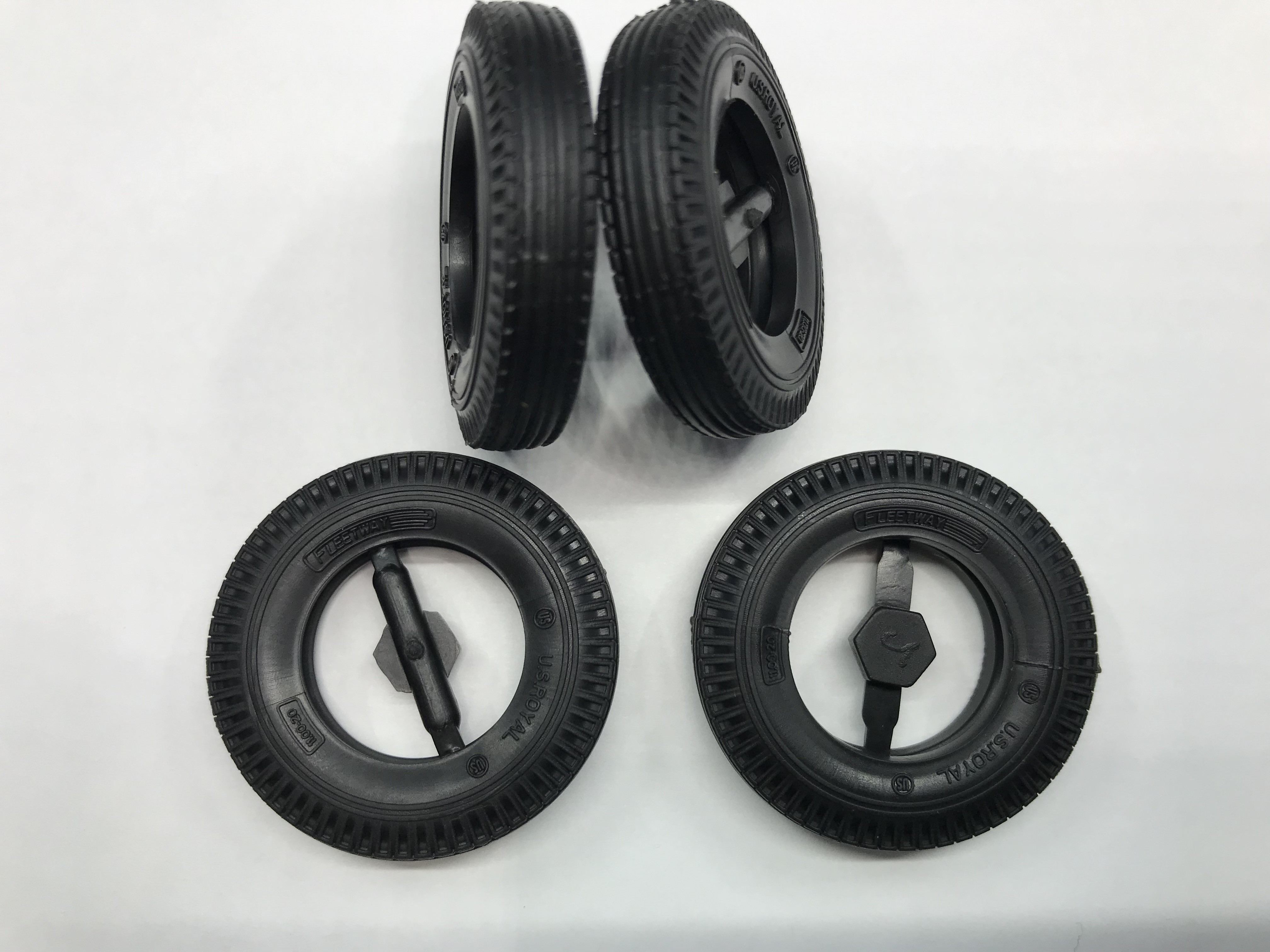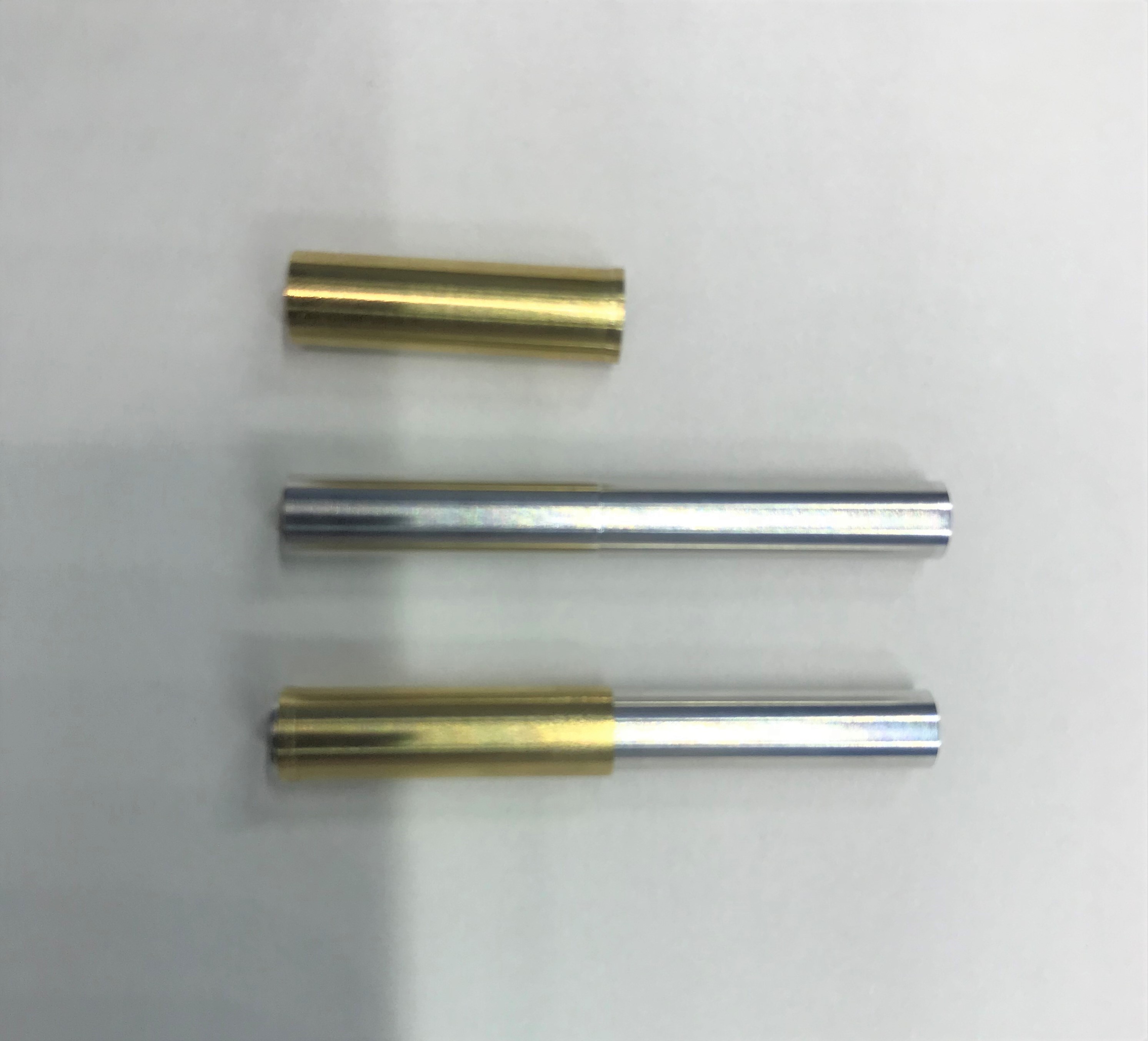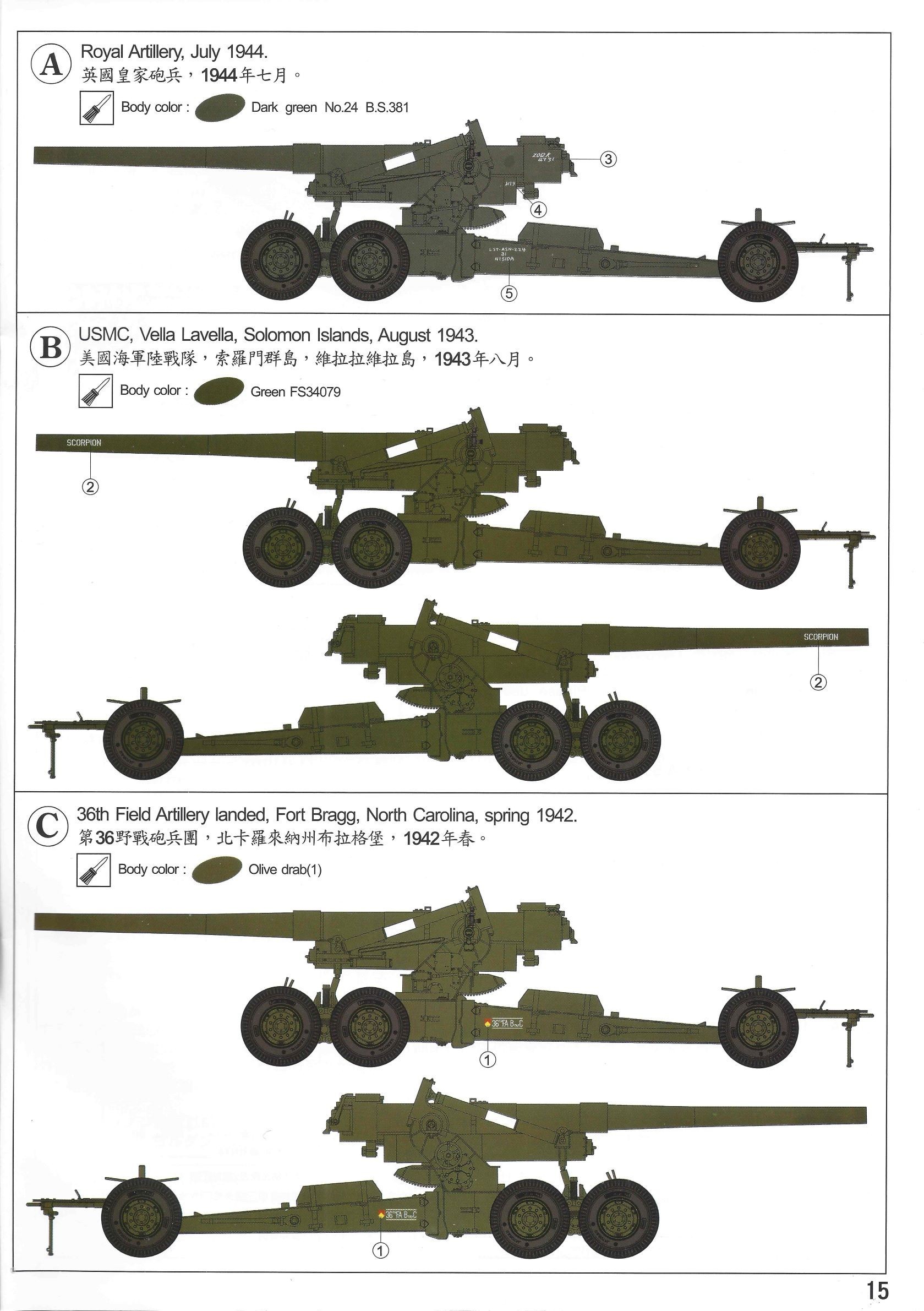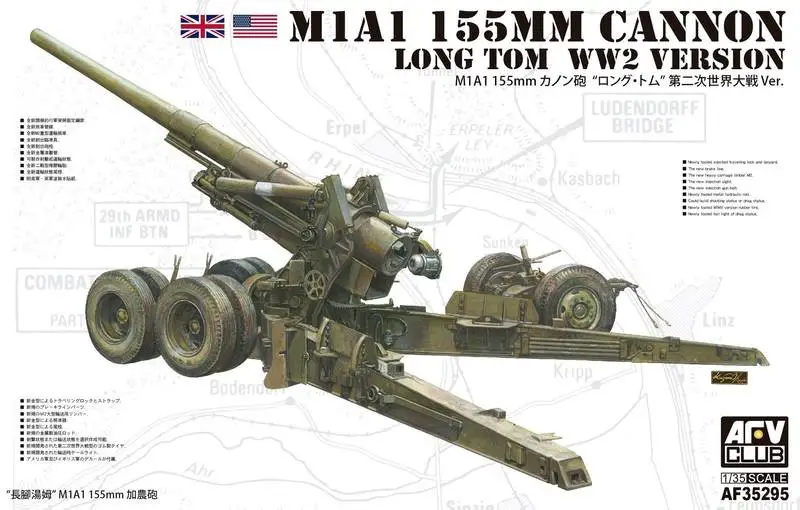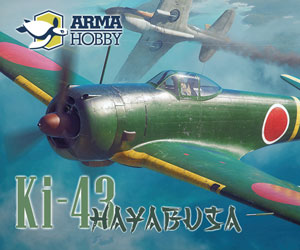Introduction
In World War One, the United States lacked a modern artillery park and was forced to purchase nearly all its artillery from France and Britain. Determined not to be in that position again, it convened a board of experts immediately after the armistice to determine the Army’s strategy and requirements for modern, domestically produced artillery. One of the outcomes was a requirement for new gun to replace the French 155mm GPF. Design work began almost immediately and proceeded intermittently as funding permitted through the 1920’s and 1930’s. It was standardized in 1938 as the 155mm Gun M1 on Carriage M1. Minor changes to the breech ring resulted in the M1A1 and M2 versions. Production began in 1940 and 1,882 were produced.
The Long Tom used the same M1 carriage and M2 limber as the M1 8-inch howitzer. When in traveling position, the trail ends of the carriage were attached to heavy carriage limber M2. The carriage was lowered to the ground for firing. When emplaced, the movable spades were installed on the carriage and on the ends of the trails. It weighted 15-tons (13,880kg) and was towed by a Mack NO 6x6 7.5-ton truck or an M4 or M5 High Speed Tractor. The M1 used separate loading ammunition with bagged powder charges. The 30-pound (13.9kg) charge propelled a 95-pound (43kg) high explosive projectile to a range of 25,714 yards (23.5km).
In World War Two, 49 US Army artillery battalions were equipped with this weapon system. They served in the North African, Italian, Northern European and Pacific theaters. 184 guns were supplied to Great Britain and 25 to France under Lend-Lease. After the war, the weapons system was designated the M59 and saw service in Korea and Vietnam and was supplied to many NATO partners and other US allies.
Review
AFV Club of Taiwan released the Korean War vintage M59 in 1996 and rereleased it in 2000. This long-awaited offering back dates it to the World War 2 version, adds additional details, and replaces the barrel. It replaces the Korean War vintage M5 limber with the original WW2 M2 heavy limber. The non-directional combat tires are replaced by WW2 vintage highway tread tires. The kit includes a new, beautifully detailed breech and breech block, new highly detailed sights, vinyl airbrake lines, removable tail light for towing, very nice metal equilibrators, and a selection of gun implements. The kit corrects the big accuracy issue with the of the M59 kit barrel.
It comes packaged in a standard two-part box. Inside are the instructions, copy of the box artwork, sprues sealed in individual plastic sleeves, vinyl tires, a metal barrel, and metal equilibrator tubes. Decals are provided for UK, USMC, and US Army guns – all during WW2.
The instructions are a sixteen-page booklet printed in color on glossy paper. The color list calls out GSI Creos, Humbrol, Vallejo, and Life Color paints. The instructions provide seventeen steps to assemble the howitzer and carriage. An additional four steps cover the assembly of the limber. The painting instructions show a standard US Army olive drab paint scheme, as well as USMC and the UK Royal Artillery. The last page provides a parts list. The instructions are the familiar CAD exploded drawings with part number call outs. I did not find any part number errors. The instructions will have to be studied carefully as there are several differences in assembly based upon your choice to depict the howitzer in firing position or travelling position. Not all of these are labeled correctly – in step two the right-hand options for the breech block should be labeled closed. In step 13, the directions fail to illustrate that the bogy assembly should be up in firing mode and all the way down for travel. Having good reference photos that show the gun in traveling and firing mode is essential. The instructions contain several obvious typos and misspellings.
Like the real thing, the 155mm Gun and the 8-inch Howitzer share an identical carriage and recoil system – the only differences are the barrel, breech ring, and breech block. All the sprues are the same as the previously released WW2 8-inch howitzer. The differences in the kit are the metal barrel, instructions, decals, and box art. As we have come to expect from AFV Club, the molding is excellent. The three of the spruces from the original M59kit are good; but the new sprues really shine. They are delicate and include such fine details as foundry marks on the cast parts. The parts count is relatively high for a towed gun kit; but many from the unchanged sprues will not be used as more detailed replacements are found on the new sprues, and the 8-inchpieces will also go into the spares box. With parts for both weapons in the sprues, carefully check part numbers in assembly steps one and two as many of the parts look remarkably similar. I was disappointed that the kit did not include a small photo-etch fret for some of the more delicate brackets and the brass data plates. The kit includes a small decal sheet that includes markings for a weapon in the UK Royal Artillery in 1944, US Marines in the Soloman Islands in 1943, and US Army in North Carolina in 1942.
The kit includes a new more detailed breech and breech block which includes the stepped interrupted threads inside the breech. This allows the modeler to depict the breech open. The M59 kit omitted the airbrake lines and fittings forcing detail-oriented modelers to scratch build these. This kit adds these missing details and molds them in vinyl. This will save the modeler many hours of work. I was delighted to find the brass and aluminum tubing for the equilibrators included in the kit. This again saves the time of scratch building these on the older M59 kit. Although the original kit sights were better than average, AFV Club redesigned them to add even more detail. If you plan to depict the weapon in traveling mode, the kit includes a finely detailed and molded removable tail/stop light that was clamped onto the muzzle for road travel. The big flaw with the older AFV Club M59 Long-Tom, and M40 kits is the dimensional accuracy of the barrel and breech assembly. AFV Club fixed the issue with this release.
Sprue and part count break out:
- A – 61 parts Trails and lower carriage (unchanged from M59)
- B – 83 parts Suspension system (unchanged from M59)
- C – 54 parts Upper carriage and cradle (unchanged from M59)
- D – 24 parts Limber(unchanged from M1 8”)
- E – 81 parts Breech, breech block, details (unchanged from M1 8”)
- F – 9 parts Vinyl airbrake lines and fittings (unchanged from M1 8”)
- H – 5 parts (x2) Wheels (unchanged from M1 8”)
- I – 10 parts Vinyl Tires (unchanged from M1 8”)
- L Turned aluminum barrel (new)
- M (x2) Brass equilibrator covers (unchanged from M1 8”)
- N (x2) Aluminum equilibrators (unchanged from M1 8”)
- O (x2) Spring pins (unchanged from M1 8”)
- Decals (new)
Conclusion
This kit provides an accurate and detailed model of this important WW2 artillery piece. Prior to this release, it required hard-to-find aftermarket resin add-ons and scratch building to back date the M59 to WW2. The kit builds into a fine replica out of the box. Adding the old Eduard aftermarket photo-etch kit for the M59 will enhance the brackets on the trails and add a few minor details. All in all, this is a great kit and an important addition to any collection of WW2 artillery. Thanks to AFV Club for supplying the review kit.
